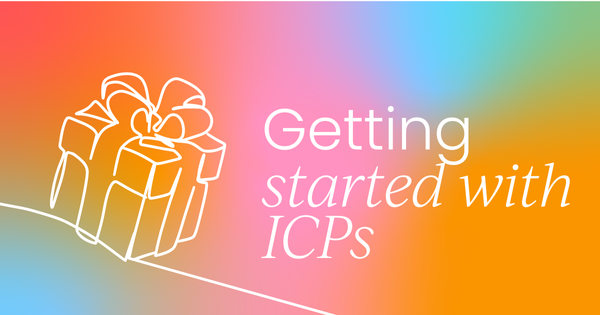This article is based on a presentation given by Sandeep John at #GTM24 Online, hosted by our sister community, Go-to-Market Alliance.
Your ideal customer profile (ICP) should be at the heart of everything your business does. However, companies get it wrong all the time – often because internal teams are misaligned on who the ICP actually is.
Today – drawing from my experience of working with ICPs of all shapes and sizes at DataTracks, FreshWorks, and Prismforce – I’ll walk you through how to get it right. Here's a taste of what I'll cover:
- Why you really need to nail down your ICP
- How to build a great ICP
- How to map your messaging to your ICP
- Examples of effective ICP messaging
Let’s get into it.
Why you need an ICP
Here’s an interesting stat: 74% of customers feel frustrated when content isn’t relevant to them.
That means we need to push for personalized experiences across the board – from customer support to marketing and sales. If you're not speaking your customers' language about their pains and benefits, you'll lose them right off the bat. That's why truly understanding your ICP is so crucial.
It’s also why we need tighter alignment between product, marketing, and sales teams. Each of these groups can benefit from a clearly defined ICP in its own way.
For product teams, the rewards for getting the ICP right are obvious – they can build products and features based on what customers actually want, not just what the competition is doing.
For marketing teams, nailing the ICP translates to spot-on messaging and content. You don't want to burn marketing dollars on generic messaging that doesn't land with your potential customers.
Similarly, a watertight ICP will help sales teams to nail their pitch. You can't just walk into sales conversations with generic chat – you need to appeal to prospects’ pain points and desires.
We've all made these mistakes before - going into marketing or sales conversations thinking we know the ICP, only to waste tremendous time, effort, energy, and money on the wrong targets. Getting laser-focused on our true ICP from the start is paramount across product, marketing, and sales. Otherwise, we're just throwing darts in the dark.
Why you need to tailor your messaging to your ICP
Let's look at some well-known companies' early messaging – not their current positioning, but rewind to when they were just starting out. Think Salesforce, Slack, HubSpot. We all know what these companies do now, but how well did their initial messaging resonate?
Salesforce's old messaging was “Access your CRM anywhere with our cloud platform.” The cloud angle made sense back then as companies moved off legacy systems, but is that punchy enough today?
Slack’s initial messaging was “Slack helps eliminate email culture.” That’s true, but does it truly capture the immense value that Slack offers teams?
HubSpot started as an inbound marketing tool, so their line was “Attract more visitors with inbound marketing.” Sure, but is that the core value they provide now?
Here's my take: for a sales team, Salesforce's mobile cloud access is nice, but the true benefits are closing deals faster and getting full visibility into what to do next. They're missing that practical sales performance angle.
Similarly, Slack is hugely powerful for collaboration, but that “no more email” messaging fails to capture all the richness of how it transforms teamwork.
And for marketing these days, it's not just about top-of-funnel visitors. Marketers are held accountable for real leads and pipelines, so HubSpot's visitor focus seems too narrow for the modern marketing remit.
Clearly, that generic messaging worked okay at the time these platforms first appeared on the scene, but would it resonate with modern buyers? I don’t think so. So, how has these companies’ messaging evolved?
Salesforce now says, “We help growing businesses grow.” This better reflects the enterprise-level businesses they’re targeting today.
Slack switched to “Made for people, built for productivity.” This makes sense given their broad customer base—they’re focusing on productivity for all kinds of teams. HubSpot has a similarly broad line: “Grow better with HubSpot.”
While all these messaging examples are undoubtedly better than their earlier iterations, they still feel pretty generic to me – like they could apply to almost any business. Are they really nailing who their ideal, best-fit customers are?
The elements of a great ICP
Let’s define what we actually mean when we talk about an ideal customer profile. To me, it's your best-fit potential customers.
There are a few key elements to consider as you set about identifying these ideal customers for your business:



 Follow us on LinkedIn
Follow us on LinkedIn


